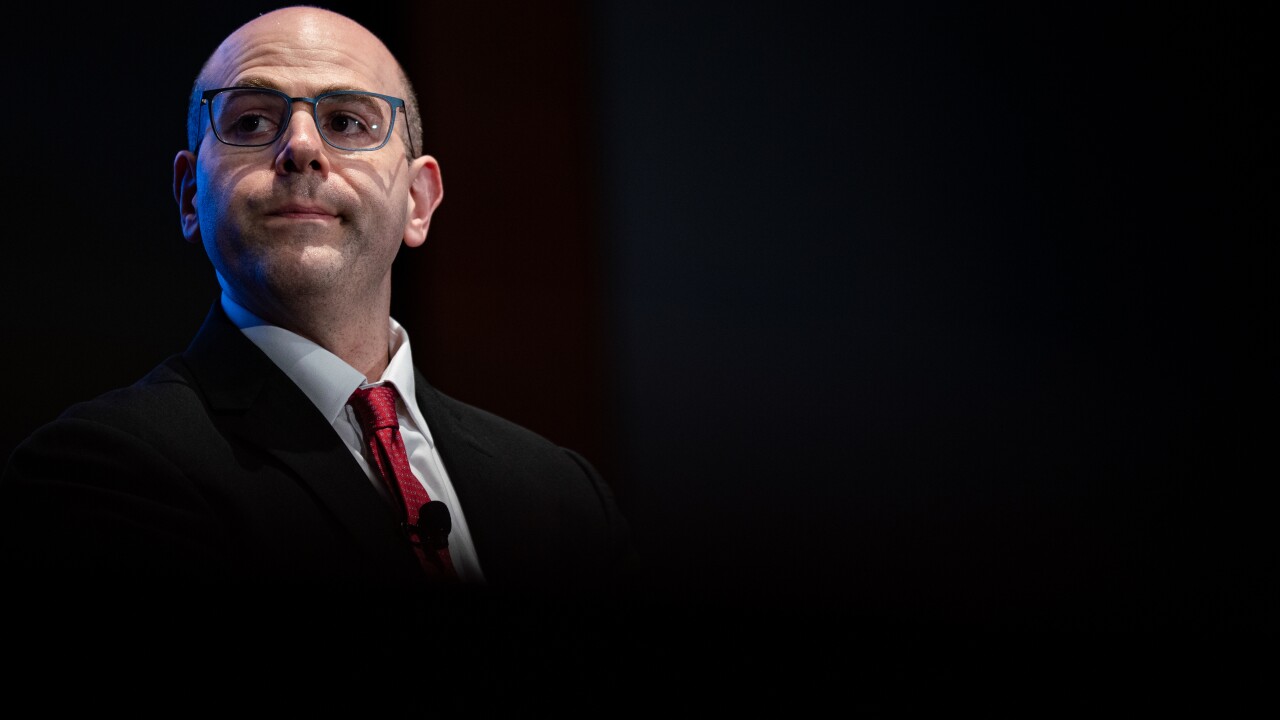According to Kroll Bond Rating Agency, solar-panel lender Loanpal last month recovered from a sharp decline in March applications.
The April 2020 volume for the 2017 spinoff from Tesla Inc.’s SolarCity was “above pre-COVID-19” levels, the ratings agency reported.
Now the lender, which holds no debt and finances all of its loans through warehouse lines of credit and forward-flow arrangements, is proceeding with two simultaneous securitizations of solar-installation loans.
LoanPal, based in Roseville, Calif., has pooled loans for both a $161.6 million Mill City Solar Loan 2020-1 and the $210.6 million Loanpal Solar Loan 2020-1 transactions, according to Kroll.
Kroll has assigned preliminary single A ratings to the senior notes in both deals.
Loanpal’s fortunes reflect what will could be a solid year for solar-panel loan originations and securitizations, despite the economic impact of the coraonvirus pandemic on markets and consumer spending.
Prior to the outbreak taking hold in the U.S. in March, the year was shaping up to be Sunnova Energy International Inc.’s best ever.
California—already the biggest U.S. solar market—had started requiring most new homes to be powered by the sun. The rooftop solar company’s shares hit a new peak in early March, and analysts projected sharp growth. Even bad news hadn’t harmed Sunnova. Rolling blackouts, which big utilities had used the previous fall to help prevent wildfires? Just another reason homeowners might want Sunnova’s solar and battery products. A trade war hadn’t stopped the rise of residential solar. Even the novel coronavirus in China didn’t look like much of a problem. In late February the company increased its estimate for the number of new customers it would bring in for the year.
But Sunnova Chief Executive Officer John Berger arrived in Snowmass, Colo., on March 12 for a ski vacation with his family already sensing that things were changing. Some runs were beginning to close, and his stock was dropping off sharply from its high. “I was thinking that my wife and kids would go skiing the next day, and I would be in the hotel room on the phone,” Berger says.
If only it had been that easy. Berger cut the trip short, returned to company headquarters in Houston, and ordered most employees to stay home. The next few weeks were a blur. Door-to-door sales—a key marketing strategy for the residential sector—had to be mostly sidelined. Daily sales had never been more volatile. Berger suspended salaries for the entire management team, let go of outside consultants, and put off some expansion plans.
“You focus on the short term because the short term is so acute,” he says. “If you can’t handle the short term, you’re not around for the long term.”
No solar executive was supposed to be talking like this, not this year. After a decade of bruising battles with utilities keen to preserve their generations-long monopolies and fallout from high-profile failures, 2020 was supposed to be the industry’s coming-out party. To Joe Osha, an equity analyst at JMP Securities LLC who, coming into this year, forecast as much as 20% growth in American residential installations, the reasons for optimism were simple: the mood in California, mounting investor enthusiasm, and the potential extension of a key federal tax credit.
There was another dimension as well. Whereas most things involving electrical grids are decided by utilities, operators, and governments, rooftop solar is participatory; it’s a personal choice. If climate-sensitive homeowners want to do something to directly help with decarbonization—and show it off—one option is rooftop panels. With all that still in mind, Osha remains optimistic. “There’s no particular reason not to have the same level of positivity once we get through this downturn and the disruptions associated with it,” he says, though he now thinks the residential market will be unchanged at best this year.
Palmetto, a solar and clean energy company based in Charleston, S.C., has seen strong growth during the pandemic, says CEO Chris Kemper. Its customer base surged 40% from January to April.
One thing that’s helped: Palmetto shifted to a gig economy model well before the crisis, Kemper says. Early on the company’s “members,” as they’re known, primarily had sales experience within the solar industry. In March, Palmetto began marketing itself to new recruits. With more and more people out of work, membership has almost doubled from January and now counts schoolteachers, Uber and Lyft drivers, and real estate brokers in its number.
Although equity analysts at Cowen & Co. tracked a 30% to 40% drop in U.S. residential installations in the second quarter, there’s a sense in the market that a rebound may not be too far away. Sunrun Inc. in San Francisco, America’s biggest rooftop company, has begun bringing back furloughed panel installers. BloombergNEF now forecasts 2.6 gigawatts will be deployed in the country in 2020, which, though below last year’s high of 2.8GW, would still be the sector’s third-best annual performance. BNEF has seen demand weaken because of the virus, but the California mandate has helped cushion the blow. It expects installations to reach a new high of 3.2GW next year and 5.8GW in 2022, with government incentives and cost reductions driving the expected surge.
Around the world there are pushes to expand rooftop solar amid the pandemic. South Korea bumped up its subsidy for residential and commercial solar, which BNEF says will likely prompt record-high installations this year. Switzerland, which had a strong first quarter compared with last year but anticipated outbreak-prompted setbacks, will allocate 46 million Swiss francs ($47 million) to support development. Italy’s stimulus package, passed in May, increases the income tax rebate for photovoltaic systems smaller than 20 kilowatts from July 1 of this year through the end of 2021, says Jenny Chase, a solar analyst at BNEF. “These are probably not the last countries to use residential solar to keep people working,” she says.
Philip Shen, a Roth Capital Partners analyst, said in a note Tuesday that the volume of residential solar installations “accelerated substantially” during May and that the third quarter could be robust.
As for Sunnova, sales volumes increased throughout April and into May from the March nadir. Capital markets have improved, solar loans broadly appear to be performing well, and customers are meeting payment obligations. While the rooftop solar company laid off about 20 people in the early days of the crisis, Berger says he now employs more people than before the pandemic began. Sunnova’s stock is up 47% for the year.

In May, Kroll announced that it was placing no asset-backed securities related to solar-panel financing on downgrade watch, after assessing the potential pandemic impact on 63 outstanding tranches in 17 solar ABS deals it tracks.
“Solar loan issuers and servicers have begun to offer borrowers temporary financial hardship plans, such as modifications, extensions, or deferrals to their loan payments,” Kroll’s report stated. “From conversations with issuers and servicers as well as from receiving supporting data, [Kroll] has observed that the percentage of borrowers on these plans is low. In most cases, as a percentage of the outstanding ABS pool or portfolio balance, the borrowers on hardship plans compose of less than 1.00%.”
For LoanPal’s managed portfolio (the lender services all of its own loans), the modification rate was less than 1%. And the lender included no loans under deferment or forbearance in either of its new securitization offerings.
In a tweet on May 13, California Governor Gavin Newsom noted that wildfires in the state had increased 60% this year from 2019. “It’s a tired cliché, but you have to walk and chew gum at the same time,” Newsom said during a visit to a fire station the same day. “We’re focused on coronavirus mitigation and trying to do our best to suppress the spread. At the same time, we’ve got to mitigate and suppress these fires as we move into wildfire season.”
The residential solar industry may actually benefit from this sudden stress test. Many of those door-to-door salespeople are figuring out how to do their job online. Sunrun CEO Lynn Jurich says the pandemic has been a catalyst for other changes—things that might have taken a couple of years got done in a few weeks. And more counties across the country are now allowing inspections to happen virtually. Both will help rooftop installers cut their biggest expense: marketing costs.
It all bodes reasonably well, Berger says: “We’re getting back to the trend line—we’re still showing growth year-over-year. I think we’ll get back to that.”
(This story includes reporting from Bloomberg and Asset Securitization Report).





